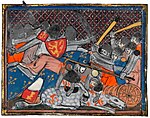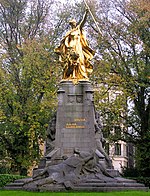Arrondissement of Kortrijk
Arrondissements of West Flanders

The Arrondissement of Kortrijk (Dutch: Arrondissement Kortrijk; French: Arrondissement de Courtrai) is one of the eight administrative arrondissements in the Province of West Flanders, Belgium. It is both an administrative and a judicial arrondissement. However, the Judicial Arrondissement of Kortrijk also comprises most municipalities in the Arrondissement of Roeselare (except Staden, Moorslede and Lichtervelde), as well as the southernmost municipalities of the Arrondissement of Tielt: Meulebeke, Dentergem, Oostrozebeke en Wielsbeke.
Excerpt from the Wikipedia article Arrondissement of Kortrijk (License: CC BY-SA 3.0, Authors, Images).Arrondissement of Kortrijk
Harelbeeksestraat,
Geographical coordinates (GPS) Address Nearby Places Show on map
Geographical coordinates (GPS)
| Latitude | Longitude |
|---|---|
| N 50.85 ° | E 3.3 ° |
Address
Harelbeeksestraat
8520
West Flanders, Belgium
Open on Google Maps








